Anne H. Janzer's Blog, page 24
December 4, 2018
Thoughts on the Creative Life: Big Magic by Elizabeth Gilbert
 Short Version
Short Version
This classic writing-related book was first published in 2015, but I only got around to reading it recently. Elizabeth Gilbert’s wonder-filled, “magical” approach to creativity would seem to be the antithesis of my cognitive-science-based approach, but I loved Big Magic and found it inspiring. You probably will as well.
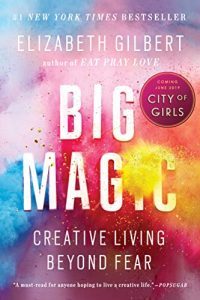 Big Magic by Elizabeth Gilbert
Big Magic by Elizabeth GilbertLong Version
At the outset, I didn’t expect to like Big Magic.
As the title suggests, Gilbert approaches creativity with a sense of mysticism and magic. She inhabits a world of free-floating ideas that alight on us from beyond.
In contrast, I believe that inspiration arises from the associative, nonlinear thought processes in our heads, accessible with practice through incubation and open attention.
Yet I love the book. Gilbert’s viewpoint is one of magic and wonder, mine of science and possibility. You don’t have to choose between these approaches. And a little magic might be exactly what you need.
The Book’s Structure
Gilbert is author of the wildly popular Eat, Pray, Love, among other works. In Big Magic, she shares the stories of her writing successes as well as failures, and their contributions to her working model of creativity and the creative life.
The book consists of a series of personal essays clustered around several themes:
Courage
Enchantement
Permission
Persistence
Trust
Divinity
You can easily read through the book in one or two sittings, or savor it section by section. You might keep it handy to revisit when you need a soothing dose of encouragement or wonder.
The section on Trust resonated with me. In this part, Gilbert makes a strong argument to abandon the idea that you have to suffer for your work.
She describes the competing archetypes of the Martyr and the Trickster. The Martyr is the one who suffers for their art, while the Trickster figures out a work-around for any problems. She writes:
“Creativity wants to flip the mundane world upside down and turn it inside out, and that’s exactly what a trickster does best. But somewhere in the last few centuries, creativity got kidnapped by the martyrs, and it’s been held hostage in their camp of suffering every since.”
The alternative to suffering is approaching your writing with a sense of curiosity, playfulness, and even joy. That seems much healthier for everyone involved.
Instead of finding your passion, Gilbert advocates that writers instead follow their curiosity. She writes, “Curiosity is the truth and the way of creative living.”

Why I Love the Book
In general, I’m not a fan of “I did this, so you should, too” advice books. Gilbert doesn’t take that tone. Instead, her personal stories illustrate and explain her working philosophy of creativity. The stories convey deeper truths.
She also strikes just the right tone: encouraging and motivating. She never suggests that you sit around and wait for the magic to happen.
Finally, she writes compellingly of living a creative life. Her book is about more than writing. As she writes, “My ultimate choice, then, is to always approach my work from a place of stubborn gladness.” We need more stubborn gladness in the world.
Take-Away
You don’t have to choose between seeing creativity as a process in your brain or as spirits in the world. It does seem magical when a voice in your head delivers a perfect line of poetry, or an idea shakes you out of slumber to jump up and write.
It’s possible to hold two competing views of creativity in our minds and call on them as needed. Creativity is science and magic. It’s a paradox, and Elizabeth Gilbert would be just fine with that.
Find other book recommendations in this post: Books to Give the Writers in Your Life.
The post Thoughts on the Creative Life: Big Magic by Elizabeth Gilbert appeared first on Anne Janzer.
November 25, 2018
Books to Give the Writers in Your Life
 Why do books make such great gifts? Let me count the ways:
Why do books make such great gifts? Let me count the ways:
They don’t perish or go stale.
They’re easy to wrap.
If the recipient is a writer, you know they like reading.
The right nonfiction book can have an impact on the recipient’s life – the gift that truly keeps giving.
The hard part is matching the book to the recipient.
To guide you in that endeavor, here’s a highly biased list of book recommendations matched to various types of writers.
The list features writing-related books that I read or reviewed this year. Some have been around for a while, but I just got around to them.
Enjoy.
For the person who dreams of living by their writing
The Business of Being a Writer by Jane Friedman
This book should be required reading for anyone who dreams of living the writer’s life. Jane Friedman offers trustworthy, encouraging and realistic advice about how to make a living for fiction and nonfiction writers alike. Read my review here.
Running Down a Dream by Tim Grahl
Tim Grahl is a master book marketer who has worked with multiple best-selling authors. In this courageous memoir, he tells of his own struggles to shape a life as a writer. Find my review here.
For the writer who needs inspiration or motivation
Big Magic by Elizabeth Gilbert
This classic writing-related book was first published in 2015, but I only got around to reading it recently. Elizabeth Gilbert’s wonder-filled, “magical” approach to creativity would seem to be the antithesis of my cognitive-science-based approach. But I loved the book and found it inspiring. You probably will as well.
 Big Magic by Elizabeth Gilbert
Big Magic by Elizabeth GilbertGrit for Writers by Tamar Sloan
This book is a guide to cultivating your most important attribute as a writer: grit. If you find yourself discouraged, flagging, or in doubt, you’ll find support and solid advice here. Find my review here.
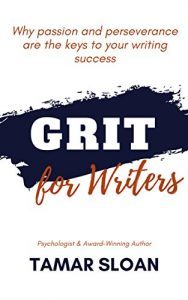 Grit for Writers by Tamar Sloan
Grit for Writers by Tamar Sloan
For the business writer
Master Content Strategy by Pamela Wilson
Pamela Wilson offers rock-solid content marketing advice for businesses (and individuals) at every stage of their business and content maturity.
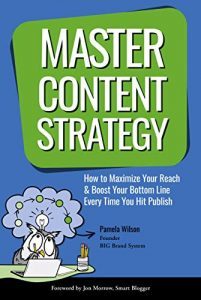 Master Content Strategy by Pamela Wilson
Master Content Strategy by Pamela WilsonWriting Without Bullshit by Josh Bernoff
How have I missed this book for two years? It’s a terrific guide to effective business writing, filled with stories and concrete examples. You have to respect Bernoff’s Iron Imperative: “Treat the reader’s time as more valuable than your own.” If you want to strengthen your writing, grab this one.
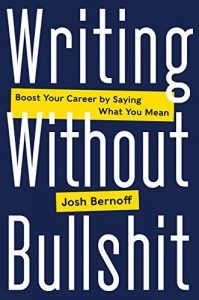 Writing Without Bullshit by Josh Bernoff
Writing Without Bullshit by Josh BernoffBusiness writers might also enjoy my book The Workplace Writer’s Process. It covers the politics and collaborative process of working with others on written content. Topics range from managing review and approval processes to handling a reluctant subject matter expert or shrinking deadline.
For the geeky, academic, or inherently curious nonfiction writer
If I Understood You, Would I Have This Look on My Face? by Alan Alda
Although the book focuses on scientific communication, it holds valuable lessons for all nonfiction writers about effective communication. Oh, and it’s fun to read as well. My review is here.
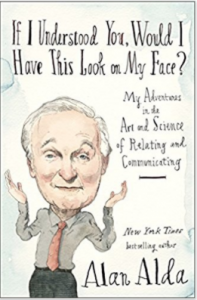 If I Understood You… by Alan Alda
If I Understood You… by Alan AldaWriting to Be Understood: What Works and Why by Anne Janzer
This book, new out this year, is the result of a long journey of discovery into why some nonfiction authors are so effective at explaining things and holding our interest. It’s particularly valuable for people accustomed to writing in academics or business and trying to reach a broader audience.
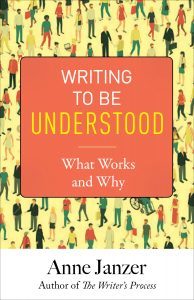 Writing to Be Understood by Anne Janzer
Writing to Be Understood by Anne JanzerFor prospective nonfiction authors
Perennial Seller by Ryan Holiday
In an age of short attention spans, failing fast, and unicorns, Ryan Holiday has written a refreshing book about creating work that lasts. The advice in Perennial Seller applies to all creative endeavors, from building companies to writing books. It’s both realistic and inspiring. [Read the full review here.]
The Nonfiction Book Publishing Plan by Stephanie Chandler and Karl Palachuk
This comprehensive guide to publishing a nonfiction book is filled with great advice. This is now my go-to book to recommend to new and aspiring nonfiction authors. Read my review here.
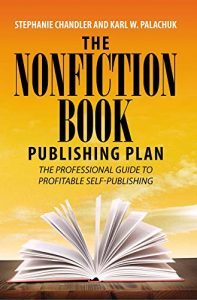 The Nonfiction Book Publishing Plan
The Nonfiction Book Publishing PlanHow to Write Non-fiction by Joanna Penn
If you’re wondering if, how, or why to write a non-fiction book, Joanna Penn’s entry in this category will help. It covers everything from the mindset you need before starting to business models, the writing process, publishing, and marketing. It’s a compact and effective overview.
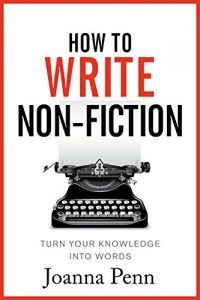 How to Write Non-Fiction by Joanna Penn
How to Write Non-Fiction by Joanna PennFor authors promoting and marketing their books
From Page to Stage by Betsy Graziani Fasbinder
Like it or not, speaking is part of the author’s overall marketing toolbox. Betsy Graziani Fasbinder offers excellent advice for becoming a better advocate for your book, whether on the stage, at an in-person reading, or on a podcast interview. [Read my full review here.]
Strangers to Superfans by David Gaughran
This short book packs a great deal of solid book marketing advice, particularly for today’s indie authors.
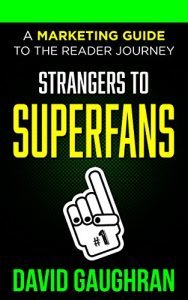 Strangers to Superfans by David Gaughran
Strangers to Superfans by David GaughranCrisis Management for Authors by Chris Syme
No one plans on having a crisis, but they happen. Chris Syme’s new book offers solid advice. If you’re serious about the author thing, grab a copy before you need it.
The writers on your list might also like The Writer’s Process – people report that the book has helped them through the process of writing their own books.
Happy gift-giving.
The post Books to Give the Writers in Your Life appeared first on Anne Janzer.
November 19, 2018
Let’s Talk about the Post-Publication Blues
 Imagine for a moment that you’ve just published a piece of writing into which you have poured your heart and soul. It might be an essay, short story, poem, blog post, or book.
Imagine for a moment that you’ve just published a piece of writing into which you have poured your heart and soul. It might be an essay, short story, poem, blog post, or book.
As it goes out in the world, you start to have second thoughts. The wind leaves your sails.
The very moment at which you should start marketing and promoting your work, you want to crawl under a rock. The first negative review comes in, or sales drop to zero, and you begin question whether the effort was worth it.
My friend, you may be experiencing a Post-Publication Blues.
Have courage – you’re not alone.
Don’t look for this in any medical books, you won’t find it. But it happens. As with post-partum depression, people don’t talk about it.* We debate cures for writer’s block, but are embarrassed about feeling low after publishing.
New authors are supposed to bask in their success and achievements. If not, we feel like failures.
We are plagued with thoughts like:
I poured my heart out on this book/blog post/essay, put it out in the world, and nobody cares.
I finally published my life-changing book, and my life hasn’t changed.
What if everyone hates it?
Although every writer is susceptible, the risks are greatest for authors. We labor for months or years to get a book out into the world. Once it’s published, the doubts, fears, and disappointments can rush in and fill up the now-vacant mental space and time.
Let’s de-stigmatize this affliction right here and now. If you know that it might be coming, you’ll be prepared to handle it.
Possible Reasons for the Slump
Many factors contribute to the post-publication slump. Some are easier to address than others.
Let’s start with the simplest: unrealistic expectations.
Many first-time book authors have no idea what to expect post publication. They envision life as a published author as a glamorous string of book signings and speaking events. That may happen, if you work like crazy or have a great publicist.
The world doesn’t usually beat a path to your door; you’ll be knocking on the doors yourself.
That brings us to the second reason for the slump: changing roles.
When you finish drafting and polishing your masterwork, you’re far from done. Indie authors make a thousand decisions about publishing and distribution. Even traditionally published authors must do the heavy lifting of promoting their books.
The skills that brought you this far aren’t the ones you need going forward. You may feel like a beginner again, and that can be demoralizing.
We cannot blame the post-publication slump entirely on the realities of the publishing landscape. At its root, it’s an entirely natural reaction to completing a project that you’ve labored on and have to let go. It’s a combination of two emotions:
The natural let-down after a long period of intense, focused activity
Fear engendered by losing control of something that you have invested so much in
Not everyone experiences the let-down. But if it happens to you, here are some ideas about how to get through it.
Acknowledge the fears
What are you afraid of?
When you confront your fears, they often lose their power. So write down everything you can think of. For example:
No one see what I’ve written.
People will think it’s unnecessary, unoriginal, poorly written, stupid, …
People will misunderstand it
Some of these fears may come true – not everyone will love what you’ve written. Not everyone will understand it.
Luckily, you’re not writing for everyone. You’re writing for a smaller subset of people – your ideal readers. If some of them find it and find value in your work, then you’ve found success.
Get emotional distance from the work
Your work isn’t finished until someone reads and interprets it – only then is it a true communication. At this point, it belongs to the readers, not you.
As Elizabeth Gilbert writes in Big Magic, “Your creative work is not your baby; if anything, you are its baby.”
Writing changes you. Acknowledge and embrace that reality, but realize that you are not your writing.

Celebrate the completion
Don’t go full tilt into marketing or promotion without acknowledging your achievement.
You have published something, completed something. That’s a major achievement. To quote Elizabeth Gilbert once again: “Mere completion is a rather honorable achievement in its own right. What’s more, it’s a rare one.”

Give yourself a break
For my latest book, I orchestrated a launch plan that required every ounce of my organizational and planning skills. Once the first few weeks had played out, I still found myself waking early in the morning and making lists. It was hard to back down from “high alert” mode. Happily, we had a trip scheduled to the mountains. Nature is a wonderful balm. It’s even better without cellular data.
If you have been working nonstop to publish and launch your new book, you may need a break to find a slower, healthier pace.

Embrace the new challenge
Your work as an author is just getting started with publication, because now you’ve got to support the book.
Embrace book marketing with the same sense of creativity and adventure that you brought to writing. Treat it as a puzzle or a learning adventure. Commit to working in it and growing in this role as well.
And by all means, start writing your next work.
*Please note, I do not mean to minimize post partum depression, which can be quite serious.
The post Let’s Talk about the Post-Publication Blues appeared first on Anne Janzer.
The Business of Being a Writer – A Book Review

Short Version
It’s fashionable to complain that no one can make a living writing, or that self-publishing is for hobbyists only. In The Business of Being a Writer, Jane Friedman begs to differ. She knows a great deal about the publishing industry, and in this book she suggests that you can make a living, but only if you approach it like a business and think creatively about your income and your time. If you’re struggling to make a living with your writing, make room on your bookshelf for this invaluable guide.
Long Version
If you worry about whether you can support yourself with writing, pick up Jane Friedman’s new book, The Business of Being a Writer. It’s filled with wise, practical, and compassionate advice for writers of all types, by the always-generous Jane Friedman. Reading it is like having a smart, experienced mentor in your corner.
When I heard Jane speak at a writing event recently, she suggested that the core audience for this book is the fiction writer. Indeed, those writers will find important insight about pursuing an MFA or other graduate degrees, teaching, literary agents, and more.
But there’s great stuff in here for nonfiction writers as well, including advice on:
Freelance writing practicalities and opportunities
How to write an author bio
Online writing and blogging
The nonfiction book proposal
The book has five parts:
Part One: Making a life as a writer
Part Two: Understanding the publishing industry
Part Three: Getting published
Part Four: The writer as entrepreneur
Part Five: How writers make money
Each section works well on its own. Read them together to develop a realistic view of how authors and other writers can support themselves and thrive in today’s market.
In particular, the book will open your eyes to options for crafting a business that supports your writing. It covers everything from affiliate income, teaching, freelance editing, freelance writing, crowd funding, and more.
3 Things I Love About This Book
The author platform discussion: Everyone talks about “author platform” but few people define it well. Friedman identifies six components of the platform:
Publicly available writing
Social media activity
The author website
Personal relationships
Influence
Actual reach
Literary citizenship: Friedman writes of the importance of literary citizenship activities that sustain the community to which you belong. Writers at any stage of their careers can cultivate literary citizenship by sharing the work of others, writing reviews, and building relationships.
The book’s overall approach and attitude: Knowledgeable as she is, Friedman does not pretend to have all the answers. Instead, she provides the resources and arms you with the right questions. She writes:
“Successful authorship isn’t a formula. It requires individuality, thoughtfulness, and critical thinking.”

Her supportive approach encourages writers to take the long view. And while realistic, the book is also optimistic:
“It remains possible to make a decent living from writing if you’re willing to pay attention to how the business works, devise a business model tailored to your goals, and adapt as needed.”
Treat it like a business. Invest your time, effort, and sometimes money to bootstrap a successful writing life. It may not be as glamorous as your dreams, but it’s possible. Use this book as a guide.
The post The Business of Being a Writer – A Book Review appeared first on Anne Janzer.
November 6, 2018
How Do You Measure Success for Your Writing?
 “What’s the moment you realize you’ve been successful?”
“What’s the moment you realize you’ve been successful?”
A friend who was about to publish her first book asked me this question the other day. It made me pause.
Most authors, indie or otherwise, won’t find their books on the New York Times best seller list. They won’t make hundreds of thousands of dollars, at least from a single book. Few will be famous.
At the same time, many indie authors I know are quite successful – on their own terms.
We have to look for other indications, other metrics, to know that we’ve succeeded.
How Do You Measure Success?
Choose your metrics with care, because they influence your behavior.
If you define success on purely financial terms, you’re likely to price your books too high, which can limit their reach.
Authors who covet the “best seller” label may mis-categorize their books, or chase such a wide audience that they miss the people who will gain the most from the book.
Bloggers who constantly pursue elusive “viral” success find it difficult to build a loyal, returning audience of readers.
A more robust definition of success will help you weather the rough patches, negative reviews, and nearly relentless work of book marketing.
Here’s one that works for me: helping others.
Perhaps it’s easier for nonfiction authors, but consider defining your success as providing truly useful, valuable information to a well-defined group of people.
Fiction authors can focus on something similar: delivering a reading experience that is [enjoyable | fun | engrossing | thrilling] for people who love [genre].
Can you find an other-focused objective for your writing?
Alas, this definition is harder to measure than clicks, sales, or appearances on television shows.
Celebrate the Subtle Signs of Success
There’s no Google Analytics dashboard that displays “personal impact on a reader.” Not yet, anyway. Until that day arrives, look for the small, subtle signs that your writing is making an impact. These include:
The positive review from someone you don’t know
The stranger who sends you an email and lets you know that the book made a difference
The reader who shares a quote from your book on Twitter or Facebook
When one of those things happens for something you’ve written, it’s energizing. It means that you’re achieving the true purpose of communication – connecting with another human being.
These indications may be few and far between. For every person who speaks up, many others may have found value but said nothing – at least, nothing you could hear.
The author Jeanette Winterston shared this writing tip: “Be ambitious for the work and not for the reward.”*

This may be another way of saying that you should define success based on others, not yourself.
* Thanks to Maria Popova for surfacing this quote on her Brain Pickings blog post.
The post How Do You Measure Success for Your Writing? appeared first on Anne Janzer.
October 29, 2018
Master Content Strategy by Pamela Wilson – A Book Review
 Short Version
Short Version
What is content strategy, anyway? In this relevant and approachable guide, Pamela Wilson lays it all out in a practical, actionable, and fun guide. Master Content Strategy will become one of those books you refer to again and again.
Long Version
Few people understand content marketing strategy as thoroughly as Pamela Wilson. Lucky for us, she is generous about sharing her wisdom.
Her previous book, Master Content Marketing, is a classic in its genre. (Read my review here.) Now she’s written the perfect companion: Master Content Strategy: How to Maximize Your Reach and Boost Your Bottom Line Every Time You Hit Publish. If content is any part of your marketing strategy, grab this book. You will be happy you did.
Advice for Bloggers in Every Phase
Advice about content strategy is often either too deep for the novice or too bland for the expert. One size does not fit all.
Although she is expert at managing mature websites, Pamela knows what needs to happen at every phase. The book describes a “lifecycle” approach to content strategy.
It makes so much sense! To liven up the approach, Wilson compares the stages of content maturity to a developing baby, mimicking advice for new mothers in the What to Expect When You’re Expecting books.
The analogy works for me.
She has separate chapters for new websites, growing websites, and “mature” websites with over 300 or more pieces of content.
If you’re just getting started creating blog posts, podcasts, videos, or other content, you’ll find solid advice on finding and targeting your core audience. My favorite quote here is this on:
“If you write to the wrong person, you’ll attract them.”
Once your feet are under you and you’ve been churning out content for a while (possibly using the content crash course in the book), you’ll find guidance on creating “deep dive” content and expanding your reach across different platforms.
With a mature website, your role changes: “Approach your content like a resource librarian and maintenance person.”
We get so caught up creating content, we forget to maintain what we’ve already done.

This is a guide to keep by your side for a long time. These are a few of the highlights you may return to again and again:
Images and how to deal with them on your website
Creating deep dive content
How to upgrade older published content
Updating older pieces
Repurposing content across different formats
Content amplification strategies
What I Love About This Book
Is content strategy an innately exciting topic? Not for most of us, honestly. But reading this book is a pleasure. It‘s both practical and inspiring, and that‘s a rare mix.
Masterful writers can make any topic compelling. Pamela Wilson fits that category.
Her lifecycle approach is likewise invaluable. Needs and responsibilities change as your site accrues more content, and few people address that fact.
I’m off to work on maintaining my blog and repurposing content. Go read Master Content Strategy.
The post Master Content Strategy by Pamela Wilson – A Book Review appeared first on Anne Janzer.
October 24, 2018
The Podcast Interview and Beyond

This is the third in a series of posts about being a podcast guest. Read the first one here.
The hour for your podcast interview has arrived.
If you’ve done your preparation work as described in the previous post in this series, then you’ve got a few notes together, you understand the audience, and you know what you need to do.
What happens in the next hour, and then the next few weeks, will determine how valuable this podcast is for your author platform.
Get in the Zone
You want to be both relaxed and attentive. The more conversational and real you sound, the easier it is for the listeners.
Tap your inner powers of personal communication. The most compelling podcast interviews feel like conversations. Picture the person you’re speaking with. It might help you relax and find your conversational groove.
Don’t worry about nerves. You might feel nervous for your first podcast interviews. It’s okay. Listeners will understand. Great podcast hosts bring out the best in their guests, so trust in that process.
Protect your focus. If you’re using your computer for the call, shut down other applications like email. Turn off or minimize anything that will distract you from the conversation at hand. Focus on the discussion.
My friend Karen Catlin tells me she goes into a walk-in closet during podcast interviews, both to dampen the outside sounds and minimize distractions. (Don’t do that on a video interview, though.)
How to Answer the Questions
I asked Douglas Burdett about his advice for podcast guests. Douglas hosts the wonderful Marketing Book Podcast. He is one of those podcast hosts that brings out the best in his guests while serving the listeners.
Douglas takes the time to read the books ahead of time, so he can ask careful, thoughtful questions that serve his listeners. He offers this advice:
“Answer the question.”
Hosts understands what their listeners want. Trust them. Listen to their questions carefully and respond as best you can.
If you don’t know an answer, don’t be afraid to say so. Admitting it might make you more likable.
Here’s more advice on crafting your answers:
Remember the show length. Don’t give a 10-minute answer to a question if the typical episode is 20 minutes. Adjust your answers to the time available.
Think about the listeners. Picture the host, but think about the audience. Who’s listening? What will they want to know? Can you provide something they’d find interesting, entertaining, or actionable? Be practical.
Also, remember that you have to earn the audience’s attention. Can you get them interested? Tell a story? Surprise them? You’ll earn bonus points for being an interesting podcast guest.
Don’t Sell
Ideally, the podcast listeners will rush out and buy your book. Oddly enough, pitching the book nonstop will have the opposite effect.
Every podcast host should mention your book and give you a chance to tell people where to reach you. But unless it’s the focus of the call, avoid the temptation to harp on it. If people liked what you had to say, they may purchase your book, even if you weren’t talking about it directly. People buy things from authors they like and respect.
Say Something Memorable
The host will look for bits of wisdom they can extract from the recording, repeat, or sum up at the end of the call. So, make it easy for them by creating sound bites.
In the post on preparing for the podcast, I suggested that you write down a few succinct sentences or phrases that express your key ideas. Refer to your notes and call on them, if you can do while sounding natural.

If you articulate your key messages clearly and concisely, and they may end up in tweets or show notes. Plus, you’re doing the host (and the listeners) a favor.
Mention Previous Episodes
If you did your homework and listened to other episodes, you might refer to a previous guest on the podcast. This helps the podcast host and creates a connection with loyal podcast listeners.
Dealing with the Unexpected
Coughs. Doorbells. Dogs. The outside world doesn’t stop when you’re doing a podcast interview. So be ready to deal with distractions.
Audio problems: Sometimes the audio cuts in and out. If your call drops, dial back in right away. If you cannot hear a question, ask the interviewer to repeat it. (If they edit the recording, they can fix it this interaction.) These things happen and the world never ends.
An awkward interview: I once did a podcast interview with a host who had the flu, and for some reason didn’t reschedule. It was flat as a pancake. It never aired. Sometimes you simply don’t click. No one’s perfect all the time.
On Publication Day/Week
Much of your most important job, as a guest, happens long after the interview itself.
First, thank the host. They’ve done you a solid favor by inviting you, so be gracious. You can help them by referring other guests or leaving a review on of the podcast series.
Your podcast may not air for weeks (or more) after the recording. When it does, promote it.
Let your email list know about the podcast.
Share it on your social media platforms.
Add it to your author website.
Retweet, like, and share anything the podcast host posts.

You can help the host spread the word about the podcast beyond their usual audience, just as they are exposing you and your book to a potential new circle of readers.
The Weeks and Months That Follow
Podcasts have no expiration date. People continue to contact me about episodes months, even years, after they have been published.
Keep a file with links to the interviews you’ve done for your book, and share them over the following weeks and months. (An automated social media scheduler like Buffer makes this simpler.)
Include the podcast link on your book’s page or your website.
Wrapping Up
Being a good podcast guest requires effort before, during, and after the podcast.
You won’t do it all perfectly every time. You may not have much preparation time, or perhaps you have an off day on recording. Do the best you can to be a valuable and valued guest.
If you do the work, people might invite you to return or refer you to their friends. Plus, you meet wonderful people in your conversations. Podcasters make great friends.
Related Links
An Author’s Guide to Being a Good Podcast Guest Part One (why to do it and how to find and query podcast)
Preparing for the Podcast (Part Two)
I try to practice what I preach. Check out my most recent visit to the Marketing Book Podcast, or SmartyPants Book Marketing podcast. Both are conversational and fun.
The post The Podcast Interview and Beyond appeared first on Anne Janzer.
October 23, 2018
Collaborative Writing
 Although writing in the workplace is a team sport, usually only one team member bats at a time. After the planning phase, the designated writer accepts responsibility for putting the words together for the first draft.
Although writing in the workplace is a team sport, usually only one team member bats at a time. After the planning phase, the designated writer accepts responsibility for putting the words together for the first draft.
In some situations, however, team participation also extends to the drafting phase. Truly collaborative writing presents significant challenges for all participants. Have a clearly defined plan and adjust it as you work.
Before you decide how to collaborate, understand why you’re doing it.
Examine the Motives
Group writing projects typically arise from one of the following three situations:
Assigning multiple stakeholders to the writing process to satisfy internal politics (writing by committee)
Adding writers to accelerate the output (writing in parallel)
Creating content that is the unique result of several individuals working together (true collaboration)
In the first situation, writing by committee, everyone’s pet ideas or phrases get a chance to be heard (or removed) during negotiated drafting. The process is subject to the perils of groupthink, a kind of dysfunctional group decision making that arises from our natural desire to achieve consensus and avoid conflict. The resulting text may check the boxes of all the committee members, but rarely serves the reader’s needs. Avoid it if possible.
Writing by committee is painful. True collaboration is fulfilling.
The second situation, adding writers to speed the end result, often happens on massive projects. Depending on the project, this strategy may add as much time in planning and revision as it saves in drafting.
In the famous book about programming, The Mythical Man-Month, Fred Brooks Jr. de-bunks the idea that adding programmers to a project accelerates it: “Adding manpower to a late software project makes it later.”
The same thing can happen with writing.
To accelerate a project or reduce the load on an author, consider adding collaborators in other phases of the project, including research, revision and editing, and review management.
The third reason to write as a team is to generate better or different content than any participant could achieve individually.
This kind of collaboration requires a trusting relationship. Each writer must be willing to work in service of the end result.
Collaboration Models
Collaborative authorship is a difficult balance to maintain. Much will depend on your ability to work with the others on the team. Determine which model works for your team.
One writer, multiple authors: In this model, the group might work closely together determining the objectives, researching, and creating the outline. The group discusses the key points of each section verbally or in written communications. The designated writer (who may also contribute con-tent) assembles the words into a draft, which the team revises together.
Multiple writers as one voice: Some coauthors divide the work, each writing certain sections and then assembling them as one. An editor can create a consistent tone and style at the end. This kind of collaboration requires careful division of work and ongoing communication so that the reader experiences a consistent flow.
Multiple writers in an anthology: In this case, you do not attempt to disguise the reality of multiple writers. You still need to collaborate closely to be sure that the finished work serves the reader’s interests. Work together planning the objectives, creating an outline, and making key deci-sions about tone and style.
Determine ahead of time how you are going to work out potential conflicts about content, style, and tone. For example, a subject matter expert might collaborate with a professional writer to draft a book; the writer should have the say on tone and style, and the expert on the con-tent matter.
Many wonderful films, books, and television shows are the results of successful, productive collaboration. If you have a chance to work on a writing team, set out with clear expectations and roles, and a commitment to the reader. True collaboration may be an opportunity for growth.
This post is an excerpt from my book The Workplace Writer’s Process. Through October, the book is on sale for $2.99 on Kindle.
The post Collaborative Writing appeared first on Anne Janzer.
October 16, 2018
Subscription Marketing Update: October 2018
 In the Northern hemisphere, October is the month in which we harvest what we have sown. In my case, I’ve been sowing interviews about my latest book, Writing to Be Understood, on a virtual book tour since its publication late summer. They are coming to fruition now.
In the Northern hemisphere, October is the month in which we harvest what we have sown. In my case, I’ve been sowing interviews about my latest book, Writing to Be Understood, on a virtual book tour since its publication late summer. They are coming to fruition now.
These are the two I am most excited about:
The Marketing Book Podcast. This is one of my favorite podcasts for marketers. Having the chance to appear for the second time was a real thrill. Douglas Burdett reads the books he covers carefully and asks smart questions. He’s a class act.
Listen to the Marketing Book Podcast (and if you don’t already subscribe, I recommend you do.)
The Build Show on Femgineer TV. If you work in tech, you may be familiar with this wonderful video series from Femgineer called Build. Poornima Vijayashanker and I talked about communicating technical topics on two episodes.
Here are links to blog posts on Hackernoon that include the video:
Part 1: Why Doing a Bad Job of Explaining Technical Concepts Hurts our Credibility
Part 2: Three Techniques to Improve Your Explanations and Be Understood
A New Book You Should Know About
If you work at a tech startup or are considering doing so, then this month’s book is for you.
Power to the Startup People, by Sarah Brown, is a career guide to finding success as a startup employee. That’s right – not a founder or entrepreneur, but someone working at the startup. Entrepreneurs start things, but everybody else executes.
[image error] The book is a brand new release, so you’ll be the first on the block to read it.
The book is a brand new release, so you’ll be the first on the block to read it.
Other Reading and Listening You Might Enjoy
From my friend Robbie Kellman Baxter, on CIO: Why and How to Transition to a Subscription Business
On Forbes, How to Succeed in Subscription Model Marketing.
SUBTA (The Subscription Trade Association) answers the pressing question: Just how big is the subscription box industry? Read it on HackerNoon.
Listen to my friend Irit Eizips talk about customer churn on the podcast about churn, Churn It Up.
More Subscription Businesses to Check Out
What happens when self-driving cars and the subscription model merge? We’ll find out with ZoomCar. Read the article about this Indian company in TechStory.
Blue Apron for the diaper crowd? Raised Real is a subscription box for organically-sourced baby meals. For new parents looking beyond the jar, this could make sense. (New parents can use every convenience and time saver they can find.)
Do You Do Business in Korea?
Subscription Marketing was just published in Korean, in case you know someone who might be interested.
A Review of a Book on Pricing
Tom Morkes has written a book called The Complete Guide to Pay What You Want Pricing. I’m intrigued. Read my review here.
One Last Book Pitch
Until the end of October, The Workplace Writer’s Process is on sale as an ebook for $2.99. That’s pumpkin spice latte pricing territory.

Look for more updates in November.
The post Subscription Marketing Update: October 2018 appeared first on Anne Janzer.
October 12, 2018
Talking Writing on the Marketing Book Podcast
Why is a book about writing the subject of a Marketing Book Podcast episode, you may ask?
One of the biggest challenges of content marketing is creating great content. That means writing well. If you need to up your game, understand what your readers are experiencing.
That was the topic of this podcast interview. Give it a listen here, and then go subscribe to this marvelous podcast.
The post Talking Writing on the Marketing Book Podcast appeared first on Anne Janzer.











